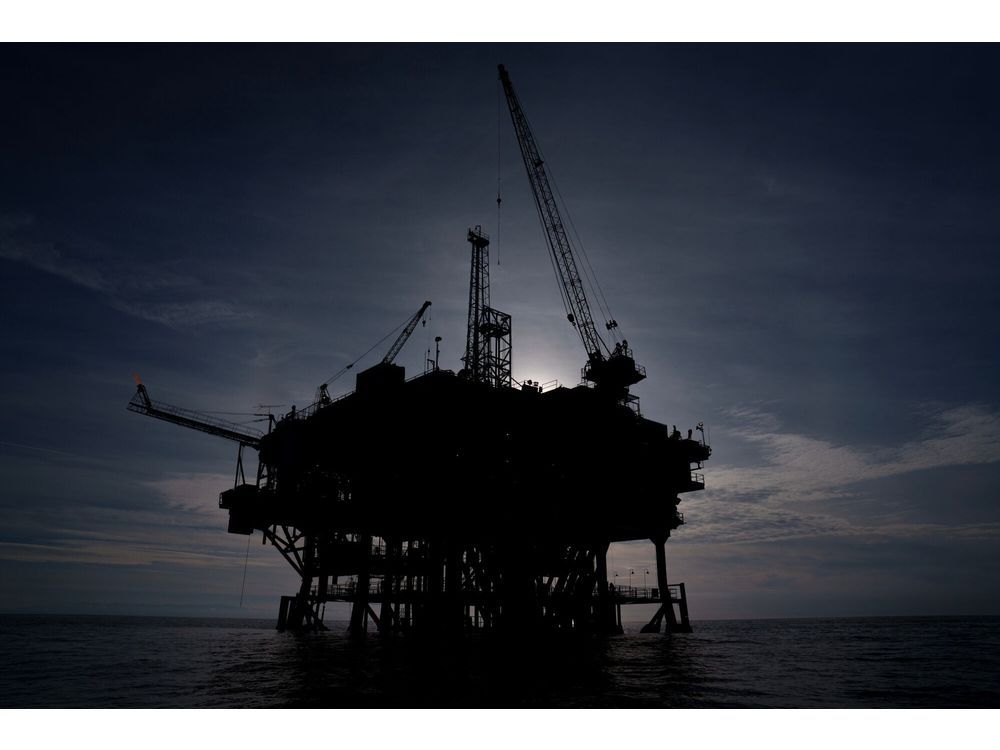
Article content
(Bloomberg) — US President Donald Trump revoked offshore oil and gas leasing bans that effectively blocked drilling in most US coastal waters as he made sweeping moves his first hours in office to unleash American energy development.
Article content
Trump’s move came as part of a broad assault on executive orders issued by former President Joe Biden, including revoking his recent decision to bar drilling rigs in some 625 million acres of coastal waters.
Article content
The president is also expected to direct the Interior Department to swiftly develop a new plan for selling offshore drilling rights on Monday, setting in motion the replacement of a Biden-era program that called for just three sales over the next five years, a record low.
It could take years for Trump’s actions to result in new oil and gas development, and it’s not clear the moves will survive legal challenges. Nevertheless, they underscore the new president’s commitment to a frequent campaign pledge: to unlock more of America’s vast stories of energy.
They also respond to the wishes of one of Trump’s top constituencies: the oil and gas industry that’s long sought more drilling opportunities on federal lands and waters. The industry clamor only grew after Biden imposed restrictions limiting access and hiking development costs in the territory.
Industry leaders argue oil and gas will be needed for decades, especially given the predicted surge in electricity demand from artificial intelligence. When American resources are developed, energy executives say they come with a smaller carbon footprint than fossil fuels from elsewhere around the world.
Article content
The International Energy Agency, however, has said the world needs to stop opening new oil and gas fields to effectively zero out energy-related carbon dioxide emissions by 2050. And many conservationists argue offshore drilling poses untenable risks to coastal communities and marine life.
Legal and political opposition confounded similar plans during Trump’s first term in office.
For instance, Trump tried to revoke former President Barack Obama’s offshore oil leasing withdrawals during his first term. But Obama’s and Biden’s drilling bans are rooted in a 72-year-old federal law that explicitly empowers presidents to withdraw US waters from oil and gas leasing without explicitly authorizing revocations, effectively making the tool a one-way ratchet for marine conservation. In 2019, an Alaska-based federal district court adopted that view in rejecting Trump’s earlier reversal.
The Interior Department also took steps during Trump’s first term to develop an ambitious five-year plan for selling offshore oil leases, initially opening the door for auctions in almost all US coastal waters. But the Trump administration dialed back its plans after pushback from politicians in coastal states, including Florida Republicans. Ultimately, the administration abandoned the effort, leaving a much smaller Obama-era leasing plan in place and disappointing oil industry advocates who’d hoped for new exploration opportunities.
The US government’s offshore lease sale plans can take years to develop, given legal requirements for environmental analysis and public comment. Even when leases are sold, they can take years to yield production, as companies conduct geological research, drill exploratory wells and — eventually, if there’s enough crude and gas to make it worthwhile — develop plans for production at the sites.
Share this article in your social network